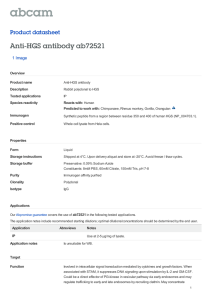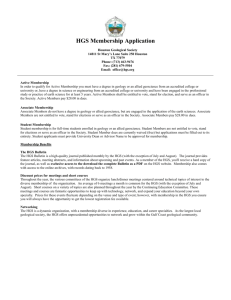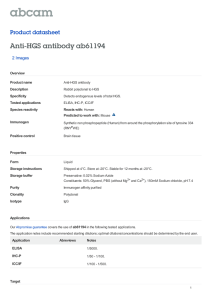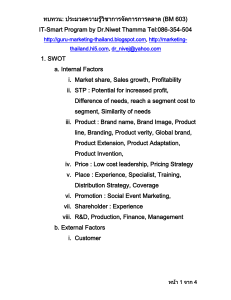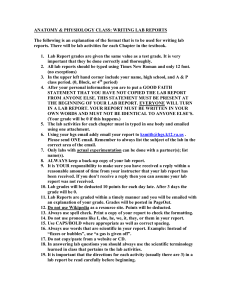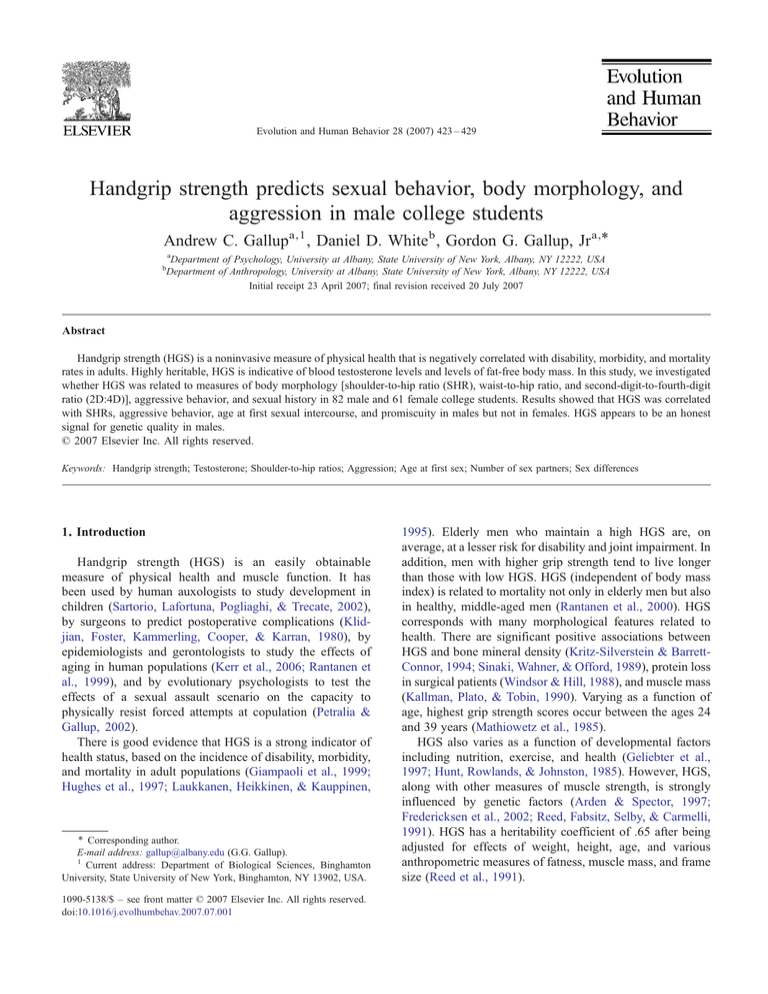
Evolution and Human Behavior 28 (2007) 423 – 429
Handgrip strength predicts sexual behavior, body morphology, and
aggression in male college students
Andrew C. Gallupa,1 , Daniel D. White b , Gordon G. Gallup, Jr a,⁎
a
Department of Psychology, University at Albany, State University of New York, Albany, NY 12222, USA
Department of Anthropology, University at Albany, State University of New York, Albany, NY 12222, USA
Initial receipt 23 April 2007; final revision received 20 July 2007
b
Abstract
Handgrip strength (HGS) is a noninvasive measure of physical health that is negatively correlated with disability, morbidity, and mortality
rates in adults. Highly heritable, HGS is indicative of blood testosterone levels and levels of fat-free body mass. In this study, we investigated
whether HGS was related to measures of body morphology [shoulder-to-hip ratio (SHR), waist-to-hip ratio, and second-digit-to-fourth-digit
ratio (2D:4D)], aggressive behavior, and sexual history in 82 male and 61 female college students. Results showed that HGS was correlated
with SHRs, aggressive behavior, age at first sexual intercourse, and promiscuity in males but not in females. HGS appears to be an honest
signal for genetic quality in males.
© 2007 Elsevier Inc. All rights reserved.
Keywords: Handgrip strength; Testosterone; Shoulder-to-hip ratios; Aggression; Age at first sex; Number of sex partners; Sex differences
1. Introduction
Handgrip strength (HGS) is an easily obtainable
measure of physical health and muscle function. It has
been used by human auxologists to study development in
children (Sartorio, Lafortuna, Pogliaghi, & Trecate, 2002),
by surgeons to predict postoperative complications (Klidjian, Foster, Kammerling, Cooper, & Karran, 1980), by
epidemiologists and gerontologists to study the effects of
aging in human populations (Kerr et al., 2006; Rantanen et
al., 1999), and by evolutionary psychologists to test the
effects of a sexual assault scenario on the capacity to
physically resist forced attempts at copulation (Petralia &
Gallup, 2002).
There is good evidence that HGS is a strong indicator of
health status, based on the incidence of disability, morbidity,
and mortality in adult populations (Giampaoli et al., 1999;
Hughes et al., 1997; Laukkanen, Heikkinen, & Kauppinen,
⁎ Corresponding author.
E-mail address: gallup@albany.edu (G.G. Gallup).
1
Current address: Department of Biological Sciences, Binghamton
University, State University of New York, Binghamton, NY 13902, USA.
1090-5138/$ – see front matter © 2007 Elsevier Inc. All rights reserved.
doi:10.1016/j.evolhumbehav.2007.07.001
1995). Elderly men who maintain a high HGS are, on
average, at a lesser risk for disability and joint impairment. In
addition, men with higher grip strength tend to live longer
than those with low HGS. HGS (independent of body mass
index) is related to mortality not only in elderly men but also
in healthy, middle-aged men (Rantanen et al., 2000). HGS
corresponds with many morphological features related to
health. There are significant positive associations between
HGS and bone mineral density (Kritz-Silverstein & BarrettConnor, 1994; Sinaki, Wahner, & Offord, 1989), protein loss
in surgical patients (Windsor & Hill, 1988), and muscle mass
(Kallman, Plato, & Tobin, 1990). Varying as a function of
age, highest grip strength scores occur between the ages 24
and 39 years (Mathiowetz et al., 1985).
HGS also varies as a function of developmental factors
including nutrition, exercise, and health (Geliebter et al.,
1997; Hunt, Rowlands, & Johnston, 1985). However, HGS,
along with other measures of muscle strength, is strongly
influenced by genetic factors (Arden & Spector, 1997;
Fredericksen et al., 2002; Reed, Fabsitz, Selby, & Carmelli,
1991). HGS has a heritability coefficient of .65 after being
adjusted for effects of weight, height, age, and various
anthropometric measures of fatness, muscle mass, and frame
size (Reed et al., 1991).
424
A.C. Gallup et al. / Evolution and Human Behavior 28 (2007) 423–429
A number of studies have shown that HGS is both a
highly sexually dimorphic and a lateralized anthropometric
measurement (Kamarul, Ahmad, & Loh, 2006; Mathiowetz
et al., 1985; Petersen, Petrick, Connor, & Conklin, 1989).
Men have consistently greater HGS than women throughout life, and right-handers tend to have approximately 10%
more strength in the right hand than in the left in both men
and women. In contrast, left-handers tend to have equal
strength in both hands (Petersen et al., 1989).
The sex difference in HGS is likely due to higher levels
of androgenic hormones (Page et al., 2005), greater muscle
mass (Kallman et al., 1990), and greater height and weight
in boys and men (Kamarul et al., 2006; Kuh et al., 2006).
Supplemental increases in testosterone increase HGS as
well as lean body mass in elderly men with low serum T
(Page et al., 2005; Sih et al., 1997; Wang et al., 2000).
Sartorio et al. (2002) found in an anthropometric
examination of 287 boys and girls of different age groups
that “age and gender-dependent differences in HG
strength (but not differences between d [dominant] and
nd [non-dominant] hand) disappear if HG strength is
normalized for FFM [fat free mass]” (p. 413). They also
found that HGS was negatively correlated with percentage
of body fat. As boys and girls mature, boys tend to have
higher measures of fat-free mass (FFM) than girls. This
trend in body composition continues into adulthood (Kyle
et al., 2005).
From an evolutionary perspective, it is interesting to
ask why HGS would be such a ubiquitous measure of
human health and vitality. Unique to the evolutionary
history of humans and all primates were complex
adaptations to life in the trees. In addition to good visual
acuity and depth perception, life in the arboreal habitat
put a unique emphasis on (a) developing sophisticated
patterns of brachiation as a means of achieving effective
mobility in the canopy and (b) corollary adaptations that
function to minimize the chances of falling. HGS was
obviously featured prominently in both of these domains.
In the present study, we sought to determine whether
individual differences in HGS among contemporary
humans would account for any observed variance in
social and sexual competition.
2. Materials and methods
We investigated HGS in relation to morphological
characteristics, behavioral traits, and sexual history
among college students. We measured shoulder-to-hip
ratios (SHRs) in males and waist-to-hip ratios (WHRs) in
females based on their ability to predict past sexual
behaviors (Hughes & Gallup, 2003). We also measured the
length of the second and fourth digits (2D:4D) of both
males and females as another measure of androgen
exposure (Manning et al., 2000). Behavioral traits of
interest included physical and relational aggression along
with physical and relational victimization. Sexual history
was also obtained based on responses to an anonymous
survey that included questions about age at first sexual
intercourse and number of sexual partners.
2.1. Participants
The methods used in this study were approved by the
Institutional Review Board at the University at Albany, and
all research conformed to the guidelines for the ethical
treatment of human subjects. Participants included 61
heterosexual female college students who ranged in age
from 18 to 25 years (mean=19.11, S.D.=1.56) and 82 male
heterosexual college students who ranged in age from 18 to
28 years (mean=18.85, S.D.=1.68). All participants signed
informed consent statements and received course credit for
their participation.
2.2. Anthropometrics
Second- and fourth-digit lengths for each hand were
recorded with a Vernier caliper using the methodology
described by Manning et al. (2000). Measures were taken
twice for each finger. Remeasurement reliability was high for
each finger (left hand: 2D, r=.984; 4D, r=.989; right hand:
2D, r=.983; 4D, r=.977). Participants were then shown how
to use a handheld dynamometer (Lafayette Instruments
Model 78010). Each participant was instructed to squeeze
the dynamometer as tightly as possible with one hand and
then with the other. Measurements (in kilograms) were
recorded on three separate squeezes from each hand,
alternating between right and left. Maximum HGS of the
three trials was used in subsequent analyses.
Shoulder and hip circumference measurements were
obtained in males and waist and hip circumference
measurements were obtained in females following the
method of Hughes and Gallup (2003). The breadth of the
same features was also measured using an anthropometer
(Lafayette Instruments Large Anthropometer #1290) to
investigate the correspondence between circumference and
breadth. Shoulder breadth or biacromial breadth is taken
with a large sliding caliper just inferior to the acromial
processes. Hip breadth or biiliac breadth is taken with a
large sliding caliper at the highest point on the lateral iliac
crests of the pelvis. Waist breadth was also taken with a
large sliding caliper at the narrowest portion of the waist
above the pelvic bones. Each measurement was taken
twice and averaged. Remeasurement reliability was high in
each case: shoulder circumference in males, r=.976;
shoulder breadth in males, r=.977; hip circumference in
males and females, r=.993; hip breadth in males and
females, r=.977; waist circumference in females, r=.829;
waist breadth in females, r=.949. We deliberately chose
not to measure SHR in females and WHR in males
because the way these features correlate with other
variables of interest is largely sex specific (see Hughes,
Dispenza, & Gallup, 2004).
A.C. Gallup et al. / Evolution and Human Behavior 28 (2007) 423–429
425
Table 1
Anthropometric descriptive statistics: mean±S.D. (n)
Maximum HGS
Males
Females
2D:4D
SHR
WHR
Left
Right
Left
Right
Circumference
Breadth
Circumference
Breadth
45.75±8.3 (80)
24.86±5.57 (61)
50.34±8.67 (80)
27.25±4.89 (61)
0.98±0.03 (80)
0.99±0.03 (55)
0.97±0.03 (80)
0.99±0.03 (61)
1.18±0.07 (80)
NA
1.52±0.12 (78)
NA
NA
0.74±0.07 (59)
NA
0.73±0.06 (55)
2.3. Survey
After all measurements were obtained, participants were
asked to fill out an anonymous survey. The survey
included questions about prior social experiences in middle
and high school (Newman, Holden, & Delville, 2005) and
sexual history. Specifically, participants were asked about
how much they physically aggressed, demeaned, embarrassed, teased, excluded, and isolated peers. They were
also asked how often they were the victim of these
behaviors. Four subscales that measure both high school
and middle school aggressiveness and high school and
middle school victimization were derived from the social
experiences survey.
The high school aggressiveness subscale included the
following questions:
1. How often did you hit, kick, or act physically
aggressive toward others during high school?
2. How often did you tease someone during high school?
3. How often did you demean, diminish, or embarrass
others during high school?
4. How often did you isolate others during high school?
5. How often did you exclude others in high school?
Responses were recorded on a 5-point Likert scale (1=not
at all, 2=once or twice, 3=occasionally, 4=frequently, 5=very
often). The mean score of the response to the five questions
was calculated to derive the subscale score. The middle
school questions were identical to the above questions except
that the time period was specified as middle school instead of
high school.
The high school victimization subscale included the
following questions with the same Likert scale response
options:
1. How often were you a victim of physical aggression
(hitting, kicking, and physical intimidation) during
high school?
2. How often were you a victim of teasing during high
school?
3. How often were you demeaned, diminished, or
embarrassed by others during high school?
4. How often were you isolated by others during high
school?
5. How often were you excluded by others during high
school?
The middle school victimization subscale asked the same
questions, specifying middle school as the time period of
interest. The mean score of the response to the five questions
was once again calculated to derive the subscale score.
Participants were also asked to respond to written
questions about sexual intercourse, their age at first sexual
intercourse, and the number of sexual partners they had.
3. Results
3.1. Sample descriptive statistics of anthropometric data
Table 1 depicts the lateralization and sexual dimorphism of
maximum HGS in our sample of college students. In this
sample, 88% of the participants were predominantly righthanded. The dominant right hands of these individuals were
approximately 9% stronger than their left hands, which is in
accord with results reported previously (Kamarul et al., 2006;
Petersen et al., 1989). Similarly, the sex difference we obtained
in HGS is also in accord with results from other studies. As
shown in Table 1, the differences in HGS between the male
and female college students in our sample were so large that
they are represented by almost nonoverlapping distributions.
Table 1 also gives the mean, standard deviations, and
sample size for 2D:4D, SHR, and WHR for the men and
women in our sample. The ranges for 2D:4D for left and
right hands are consistent with reported data from Manning
et al. (2000). Descriptive statistics for SHR in males and
WHR in females were consistent with data previously
reported by Hughes and Gallup (2003).
3.2. Correlations
Table 2 depicts the correlations among the variables
collected from females. One of the few significant correlations
in the female sample was between age at first sex and number
of sex partners, which was virtually the same as that found by
Hughes and Gallup (2003). We found a significant positive
correlation between 2D:4D and waist breadth–hip breadth
ratio in females. In contrast, however, neither maximum HGS
nor WHR correlated with our measures of sexual behavior.
Table 3 shows the correlations among the variables
obtained from the male participants. In contrast with females,
left and right maximum HGS values were negatively
correlated with age at first sex and positively correlated
with number of sex partners in males. As was true for
females, age at first sex was negatively correlated with
number of sex partners but not significantly. Similarly, our
results are in the same direction as those reported by Hughes
and Gallup (2003) for SHR and age at first sex for males.
Both shoulder breadth and shoulder circumference,
426
A.C. Gallup et al. / Evolution and Human Behavior 28 (2007) 423–429
Table 2
Pearson correlations (n) between maximum HGS, WHR, 2D:4D, and sexual behaviors in females
Maximum HGS, right
Waist circumference–
hip circumference ratio
Waist breadth–
hip breadth ratio
2D:4D, left
2D:4D, right
Age at first sex
Number of sex partners
Maximum
HGS, left
Maximum
HGS, right
Waist circumference–
hip circumference ratio
.728 ⁎⁎ (61)
−.146 (59)
−.152 (59)
−.148 (55)
−.203 (55)
.686 ⁎⁎ (54)
−.119 (61)
−.224 (61)
−.006 (54)
−.115 (59)
−.028 (61)
−.080 (61)
−.029 (54)
.003 (59)
.202 (59)
.273 ⁎ (59)
.010 (53)
.036 (57)
Waist breadth–
hip breadth ratio
2D:4D,
left
2D:4D,
right
Age at
first sex
.301 ⁎ (55)
.279 ⁎ (55)
.016 (50)
−.019 (53)
.686 ⁎⁎ (61)
.074 (54)
.178 (59)
.056 (54)
.119 (59)
−.376 ⁎⁎ (53)
⁎ pb.05 (two tailed).
⁎⁎ pb.01 (two tailed).
independent of hip morphology, were negatively correlated
to age at first sex (shoulder breadth: r=−.254, p=.034, n=70;
shoulder circumference: r=−.266, p=.025, n=71). Maximum
HGS in males was also significantly correlated with shoulder
breadth (left: r=.504, pb.001, n=80; right: r=.363, p=.001,
n=80) and shoulder circumference (left: r=.589 pb.001,
n=82; right, r=.423, pb.001, n=82).
A high school and middle school bullying subscale was
derived for each participant based on his or her answers to
the social experiences section of the survey. The subscale
scores include information about physical as well as
relational victimization. In males (see Table 4), maximum
HGS for the left hand significantly correlated with the high
school aggression subscale score (maximum HGS, left:
r=.302, pb.01, n=82). In other words, male participants who
self-reported more aggressive behaviors toward their peers
while growing up had stronger grip strength. Left-hand
2D:4D also correlated with aggressive behaviors among
males in high school (r=−.267, p=.015, n=82). The
victimization subscales and the middle school bully subscale
showed no relationship with HGS.
4. Discussion
Male HGS predicted aspects of body morphology, past
aggressive behavior, and sexual behavior. As HGS went up,
males tended to have broader shoulders, were more
aggressive, had sex at an earlier age, and reported having
more sex partners. These results showing a relationship
between male HGS, body morphology, and sexual behavior
have been recently replicated (Shoup & Gallup, 2007). HGS
appears to be related to an ensemble of masculine-specific
characteristics, and we believe that HGS in males is an
indicator of selection during evolutionary history for overall
physical strength among males. This may explain why
female participants showed no relationship between HGS
and any of these measures.
Sexual dimorphism in body size and body configuration
reflects differences in reproductive strategies and mate
choice. Hughes and Gallup (2003) found that WHR in
college women was correlated with age at first sex and
number of sex partners, whereas SHR was correlated with
these same measures in men. In our study, shoulder breadth
and shoulder circumference predicted age at first sex in
males, but we found no correlation between sexual behavior
and SHR or WHR. Shoulder breadth and shoulder
circumference also predicted maximum HGS for both right
hand and left hand in males, while SHR correlated with lefthand maximum HGS.
As SHR increases in men, body appearance generally
becomes more triangular or wedge shaped. Based on
findings by Sartorio et al. (2002) and Kyle et al. (2005), it
is reasonable to suppose that this pattern is related to FFM
Table 3
Pearson correlations (n) between maximum HGS, SHR, 2D:4D, shoulder circumference and breadth, and sexual behaviors in males
Maximum
HGS, left
Maximum HGS, right
Shoulder circumference–
hip circumference ratio
Shoulder breadth–hip breadth ratio
2D:4D, left
2D:4D, right
Age at first sex
Number of sex partners
⁎ pb.05 (two tailed).
⁎⁎ pb.01 (two tailed).
Maximum
HGS, right
.816 ⁎⁎ (82)
.218 ⁎ (82)
.116 (82)
.242 ⁎ (80)
−.139 (82)
−.083 (82)
−.247 ⁎ (71)
.330 ⁎⁎ (75)
.098 (80)
−.081 (82)
.004 (82)
−.237 ⁎ (71)
.270 ⁎ (75)
Shoulder circumference–
hip circumference ratio
Shoulder breadth–
hip breadth ratio
2D:4D,
left
2D:4D,
right
Age at
first sex
.374 ⁎⁎ (80)
−.161 (82)
−.059 (82)
−.063 (71)
.142 (75)
−.057 (80)
−.015 (80)
−.224 (70)
.038 (73)
.577 ⁎⁎ (82)
−.171 (71)
−.069 (75)
−.226 (71)
−.039 (71)
−.231 (70)
A.C. Gallup et al. / Evolution and Human Behavior 28 (2007) 423–429
427
Table 4
Pearson correlations (n) between maximum HGS and physical and relational aggression and victimization subscales
Maximum HGS, right
High school
victim subscale
Middle school
victim subscale
High school
aggression subscale
−.090 (61)
.086 (61)
−.111 (61)
.042 (61)
−.108 (61)
−.024 (61)
−.160 (61)
.015 (61)
.725 ⁎⁎ (61)
.332 ⁎⁎ (61)
.239 (61)
.303 ⁎ (61)
.151 (61)
.689 ⁎⁎ (61)
−.042 (82)
.096 (82)
.302 ⁎⁎ (82)
.111 (82)
.067 (82)
.116 (82)
.193 (82)
.123 (82)
.669 ⁎⁎ (82)
.286 ⁎⁎ (82)
.266 ⁎ (82)
.178 (82)
.266 ⁎ (82)
.64 ⁎⁎ (82)
Maximum HGS, left
Females
High school victim subscale
Middle school victim subscale
High school aggression subscale
Middle school aggression subscale
Males
High school victim subscale
Middle school victim subscale
High school aggression subscale
Middle school aggression subscale
⁎ pb.05 (two tailed).
⁎⁎ pb.01 (two tailed).
and other aspects of masculinity. Our data show that HGS
and shoulder breadth not only correlate with each other
but are also both good indicators of sexual history (age at
first sex).
Aggressive behavior was measured using a survey
including questions associated with bullying behaviors
during adolescence. HGS was positively correlated with
behaviors such as physical aggression, verbal teasing, and
demeaning. Physically strong adolescent males (as measured by HGS) were more socially aggressive while
growing up. These findings could have important implications for how we look at bullying behavior in males as it
relates to hierarchy formation, social dominance, and
reproductive success.
One of the most substantial correlations to emerge from
our analysis was the relationship between HGS and number
of sex partners in males (i.e., HGS accounted for more than
10% of the variance in male promiscuity). Males with higher
HGS not only had more sexual partners but also began
having sex at an earlier age. This may be a consequence of
the fact that males with high HGS scores are more masculine
in both physical and social characteristics and therefore are
seen by females as more desirable short-term mates
(Frederick & Haselton, 2007).
Previous research has shown that HGS is a significant
predictor of health status, postoperative recovery, longevity,
reduced disability, reduced morbidity, recovery from injury,
protein loss, bone mineral density, muscle mass, and
percentage of body fat. These findings, coupled with our
behavioral and morphological data, support the idea that
HGS may be a good predictor of genetic quality in males.
Indeed, we predict that HGS may also correlate with other
masculine physical features such as facial attractiveness.
Research has shown that male facial attractiveness predicts
masculine-specific characteristics and may also signal
quality genes (Johnston, Hagel, Franklin, Fink, & Grammer,
2001; Schieb, Gangestad, & Thornhill, 1999; Thornhill &
Gangestad, 1999). It is important to note, however, that these
effects can vary depending on partnership status, temporal
context, and hormonal status as related to where the female
rater is across her menstrual cycle (Johnston et al., 2001;
Little, Jones, Penton-Voak, Burt, & Perrett, 2002).
We suspect that one of the leading factors playing a
role in the variation of HGS among males is testosterone
levels. It has been repeatedly shown that when testosterone
is increased in men with low serum T, HGS increases
(Page et al., 2005; Sih et al., 1997; Wang et al., 2000;
however, see Malkin et al., 2006, for an exception).
Testosterone supplements have been shown to boost
rehabilitation effects in elderly men (Bakhshi, Elliott,
Gentili, Godshalk, & Mulligan, 2000). It has also been
widely observed that testosterone levels are related to
aggressive behavior and variation in masculine-specific
body configuration (Book, Starzyk, & Quinsey, 2001;
Hansen, Bangsbo, Twisk, & Klausen, 1999; Higley et al.,
1996; Scerbo & Kolko, 1994; Tremblay, 1998; Wang et
al., 2000). As to female variation in testosterone, the range
of variation in T is much more truncated and may explain
the absence of similar correlations.
FFM has also been shown to be a major contributing
factor to HGS (Sartorio et al., 2002), and testosterone
replacement increases FFM in hypogonadal men (Bhasin et
al., 1997). If testosterone levels contribute to HGS in
males, it may explain the aggressive behavior, observed
masculine-specific body morphology, and promiscuity we
found to be associated with HGS. Further research should
investigate the association between HGS and blood/
salivary testosterone levels.
We believe that HGS is an easily obtainable and reliable
measure and may be valuable in studying human behavior
from an evolutionary perspective. Considering that the
research on 2D:4D often yields inconsistent results (Bailey
& Hurd, 2005; Benderlioglu & Nelson, 2004; Lippa, 2006;
Millet & Dewitte, 2006; Moore, Quinter, & Freeman, 2005;
Putz, Gaulin, Sporter, & McBurney, 2004; Rahman,
Korhonen, & Aslam, 2005), HGS may serve as a useful
supplemental variable. As further evidence of the inconsistency in 2D:4D research results, our findings failed to
replicate Fink et al. (2006) in showing a relationship between
HGS and 2D:4D.
428
A.C. Gallup et al. / Evolution and Human Behavior 28 (2007) 423–429
Whereas HGS is a powerful predictor of health and
vitality in both men and women, in the present study, we
found that its relationship to sexual behavior and body
morphology was restricted almost exclusively to men. One
account of this gender asymmetry in HGS as a fitness
indicator is that it might be a consequence of the fact that
upon coming down from the trees, a primitive division of
labor emerged that put a premium on the maintenance and
further elaboration of grip strength in men. Competition
among men for scarce resources, hunting, and tool use over
the past several million years may have been some of the
gender-specific vectors for the sex differences we observed.
References
Arden, N. K., & Spector, T. D. (1997). Genetic influences of muscle
strength, lean body mass, and bone mineral density: A twin study.
Journal of Bone and Mineral Research, 12, 2076–2081.
Bailey, A. A., & Hurd, P. L. (2005). Finger length ratio (2D:4D) correlates
with physical aggression in men but not in women. Biological
Psychology, 68, 215–222.
Bakhshi, V., Elliott, M., Gentili, A., Godshalk, M., & Mulligan, T. (2000).
Testosterone increases rehabilitation outcomes in ill older men. Journal
of the American Geriatrics Society, 48, 550–553.
Benderlioglu, Z., & Nelson, R. J. (2004). Digit length ratios predict reactive
aggression in women, but not in men. Hormones and Behavior, 46,
558–564.
Bhasin, S., Storer, T. W., Berman, N., Yarasheski, K. E., Clevenger, B.,
Phillips, J., Lee, W. P., Brunnell, T. J., & Casaburi, R. (1997). Testosterone
replacement increases fat-free mass and muscle size in hypogonadal men.
Journal of Clinical Endocrinology & Metabolism, 82, 407–413.
Book, A. S., Starzyk, K. B., & Quinsey, V. L. (2001). The relationship
between testosterone and aggression: A meta-analysis. Aggression and
Violent Behavior, 6, 579–599.
Fink, B., Thanzami, V., Seydel, H., & Manning, J. T. (2006). Digit ratio and
handgrip strength in German and Mizos men: Cross-cultural evidence
for an organizing effect of prenatal testosterone on strength. American
Journal of Human Biology, 18, 776–782.
Frederick, D. A., & Haselton, M. G. (2007). Why is male masculinity sexy?
Tests of the fitness indicator hypothesis. Personality and Psychology
Bulletin, 33, 1167–1183.
Fredericksen, H., Gaist, D., Petersen, H. C., Hjelmborg, J., McGue, M.,
Vaupel, J. W., & Christensen, K. (2002). Hand grip strength: A
phenotype suitable for identifying genetic variants affecting mid- and
late-life physical functioning. Genetic Epidemiology, 23, 110–122.
Geliebter, A., Maher, M. M., Gerace, L., Gutin, B., Heymsfield, S. B., &
Hashim, S. A. (1997). Effects of strength or aerobic training on body
composition, resting metabolic rate, and peak oxygen consumption in
obese dieting subjects. American Journal of Clinical Nutrition, 66,
557–563.
Giampaoli, S., Ferrucci, L., Cecchi, F., Lo Noce, C., Poce, A., Dima, F.,
Santaquilani, A., Vescio, M. F., & Menotti, A. (1999). Hand-grip
strength predicts incident disability in non-disabled older men. Age and
Aging, 28, 283–288.
Hansen, L., Bangsbo, J., Twisk, J., & Klausen, K. (1999). Development of
muscle strength in relation to training level and testosterone in young
male soccer players. Journal of Applied Physiology, 87, 1141–1147.
Higley, J. D., Mehlman, P. T., Poland, R. E., Taub, D. M., Vickers, J., Suomi, S.
J, & Linnoila, M. (1996). CFS testosterone and 5-HIAA correlate with
different types of aggressive behaviors. Biological Psychiatry, 40,
1067–1082.
Hughes, S., Gibbs, J., Dunlop, D., Edelman, P., Singer, R., & Chang, R. W.
(1997). Predictors of decline in manual performance in older adults.
Journal of American Geriatrics Society, 45, 905–910.
Hughes, S. M., Dispenza, F., & Gallup Jr, G. G. (2004). Ratings of voice
attractiveness predict sexual behavior and body configuration. Evolution
and Human Behavior, 25, 295–304.
Hughes, S. M., & Gallup Jr, G. G. (2003). Sex differences in morphological
predictors of sexual behavior: Shoulder to hip and waist to hip ratios.
Evolution and Human Behavior, 24, 173–178.
Hunt, D. R., Rowlands, B. J., & Johnston, D. (1985). Hand grip strength—A
simple prognostic indicator in surgical patients. Journal of Parenteral
and Enteral Nutrition, 9, 701–704.
Johnston, S. V., Hagel, R., Franklin, M., Fink, B., & Grammer, K. (2001).
Male facial attractiveness: Evidence for hormone-mediated adaptive
design. Evolution and Human Behavior, 22, 251–267.
Kallman, D. A., Plato, C. C., & Tobin, J. D. (1990). The role of muscle loss
in the age-related decline of grip strength: Cross-sectional and
longitudinal perspectives. Journal of Gerontology, 45, 82–88.
Kamarul, T., Ahmad, T. S., & Loh, W. Y. (2006). Hand grip strength in the
adult Malaysian population. Journal of Orthopedic Surgery (Hong
Kong), 14, 172–177.
Kerr, A., Syddall, H. E., Cooper, C., Turner, G. F., Briggs, R. S., & Sayer, A.
A (2006). Does admission grip strength predict length of stay in
hospitalized older patients? Age and Ageing, 35, 82–84.
Klidjian, A. M., Foster, K. J., Kammerling, R. M., Cooper, A., & Karran, S. J.
(1980). Relation of anthropometric and dynamometric variables to serious
postoperative complications. British Medical Journal, 281, 899–901.
Kritz-Silverstein, D., & Barrett-Connor, E. (1994). Grip strength and bone
mineral density in older women. Journal of Bone Mineral Research, 9,
45–51.
Kuh, D., Hardy, R., Butterworth, S., Okell, L., Wadsworth, M., Cooper, C.,
& Sayer, A. A. (2006). Developmental origins of midlife grip strength:
Findings from a birth cohort study. Journals of Gerontology Series A
Biological and Medical Sciences, 61, 702–706.
Kyle, U. G., Genton, L., Lukaski, H. C., Dupertuis, Y. M., Slosman, D. O.,
Hans, D., & Pichard, C. (2005). Comparison of fat-free mass and body
fat in Swiss and American adults. Nutrition, 21, 161–169.
Laukkanen, P., Heikkinen, E., & Kauppinen, M. (1995). Muscle strength and
mobility as predictors of survival in 75–84-year-old people. Age and
Aging, 24, 468–473.
Lippa, R. A. (2006). Finger lengths, 2D:4D ratios, and their relation to
gender-related personality traits and the big five. Biological Psychology,
71, 116–121.
Little, A. C., Jones, B. C., Penton-Voak, I. S., Burt, D. M., & Perrett, D. I.
(2002). Partnership status and the temporal context of relationships
influence human female preferences for sexual dimorphism in male face
shape. Proceeding of the Royal Society B: Biological Sciences, 269,
1095–1100.
Malkin, C. J., Pugh, P. J., West, J. N., van Beek, E. J. R., Jones, T. H., &
Channer, K. S. (2006). Testosterone therapy in men with moderate
severity heart failure: A double-blind randomized placebo controlled
trial. European Heart Journal, 27, 57–64.
Manning, J. T., Barley, L., Walton, J., Lewis-Jones, D. I., Trivers, R. L.,
Singh, D., Thornhill, R., Rohde, P., Bereczkei, T., Henzi, P., Soler, M.,
& Szwed, A. (2000). The 2nd:4th digit ratio, sexual dimorphism,
population differences, and reproductive success: Evidence for
sexually antagonistic genes? Evolution and Human Behavior, 21,
163–183.
Mathiowetz, V., Kashman, N., Volland, G., Weber, K., Dowe, M., & Rogers,
S (1985). Grip and pinch strength: Normative data for adults. Archives of
Physical Medicine and Rehabilitation, 66, 69–74.
Millet, K., & Dewitte, S. (2006). Second to fourth digit ratio and cooperative
behavior. Biological Psychology, 71, 111–115.
Moore, T., Quinter, C., & Freeman, L. M. (2005). Lack of correlation
between 2D:4D ratio and assertiveness in college age women. Personality and Individual Differences, 39, 115–121.
Newman, M. L., Holden, G. W., & Delville, Y. (2005). Isolation and the
stress of being bullied. Journal of Adolescence, 28, 343–357.
Page, S. T., Amory, J. K., Bowman, F. D., Anawalt, B. D., Matsumoto, A.
M, Bremner, W. J., & Tenover, J. L. (2005). Exogenous testosterone (T)
A.C. Gallup et al. / Evolution and Human Behavior 28 (2007) 423–429
alone or with finasteride increases physical performance, grip strength,
and lean body mass in older men with low serum T. Journal of Clinical
Endocrinology & Metabolism, 90, 1502–1510.
Petersen, P., Petrick, M., Connor, H., & Conklin, D. (1989). Grip strength
and hand dominance: Challenging the 10% rule. American Journal of
Occupational Therapy, 43, 444–447.
Petralia, S., & Gallup Jr., G. G., (2002). Effects of a sexual assault scenario
on handgrip strength across the menstrual cycle. Evolution and Human
Behavior, 23, 3–10.
Putz, D. A., Gaulin, S. J. C., Sporter, R. J., & McBurney, D. H. (2004). Sex
hormones and finger length—What does 2D:4D indicate? Evolution and
Human Behavior, 25, 82–99.
Rahman, Q., Korhonen, M., & Aslam, A. (2005). Sexual dimorphic 2D:4D
ratio, height, weight, and their relation to number of sexual partners.
Personality and Individual Differences, 39, 83–92.
Rantanen, T., Guralnik, J. M., Foley, D., Masaki, K., Leveille, S., Curb, J.
D, & White, L. (1999). Midlife hand grip strength as a predictor of old
age disability. Journal of the American Medical Association, 281,
558–560.
Rantanen, T., Harris, T., Leveille, S. G., Visser, M., Foley, D., Masaki, K., &
Guralnik, J. M. (2000). Muscle strength and body mass index as longterm predictors of mortality in initially healthy men. Journals of
Gerontology Series A, Biological Sciences and Medical Sciences, 55,
168–173.
Reed, T., Fabsitz, R. R., Selby, J. V., & Carmelli, D. (1991). Genetic
influences and grip strength norms in the NHLBI twin study males aged
59–69. Annals of Human Biology, 18, 425–432.
Sartorio, A., Lafortuna, C. L., Pogliaghi, S., & Trecate, L. (2002). The impact
of gender, body dimension and body composition on hand-grip strength
in healthy children. Journal of Endocrinological Investigation, 25,
431–435.
429
Scerbo, A. S., & Kolko, D. J. (1994). Salivary testosterone and cortisol in
disruptive children: Relationship to aggressive, hyperactive, and
internalizing behaviors. Journal of the American Academy of Child
and Adolescent Psychiatry, 33, 1174–1184.
Schieb, J. E., Gangestad, S. W., & Thornhill, R. (1999). Facial attractiveness,
symmetry and cues of good genes. Proceedings of the Royal Society B:
Biological Sciences, 266, 1913.
Shoup, M. L., & Gallup Jr., G. G., (2007). Male facial attractiveness
predicts body morphology and strength: Additional evidence. Paper
presented at the meeting of the Human Behavior and Evolution
Society, Williamsburg, Virginia.
Sih, R., Morley, J. E., Kaiser, F. E., Perry, H. M., Patrick, P., & Ross, C.
(1997). Testosterone replacement in older hypogonadal men: A twelve
month randomized controlled trial. Journal of Clinical Endocrinology &
Metabolism, 82, 1661–1667.
Sinaki, M., Wahner, H. W., & Offord, K. P. (1989). Relationship between
grip strength and bone mineral content. Archives of Physical Medicine
and Rehabilitation, 70, 823–826.
Thornhill, R., & Gangestad, S. W. (1999). Facial attractiveness. Trends in
Cognitive Sciences, 3, 452–460.
Tremblay, R. E. (1998). Testosterone, physical aggression, dominance, and
physical development in early adolescence. International Journal of
Behavioral Development, 22, 753–777.
Wang, C., Swerdloff, R. S., Iranmanesh, A., Dobs, A., Snyder, P. J.,
Cunningham, G., Matsumoto, A. M., Weber, T., & Berman, N. (2000).
Transdernal testosterone gel improves sexual function, mood, muscle
strength, and body composition parameters in hypogonadal men. Journal of Clinical Endocrinology & Metabolism, 85, 2839–2853.
Windsor, J. A., & Hill, G. L. (1988). Grip strength: A measure of the
proportional protein loss in surgical patients. British Journal of Surgery,
75, 880–882.

